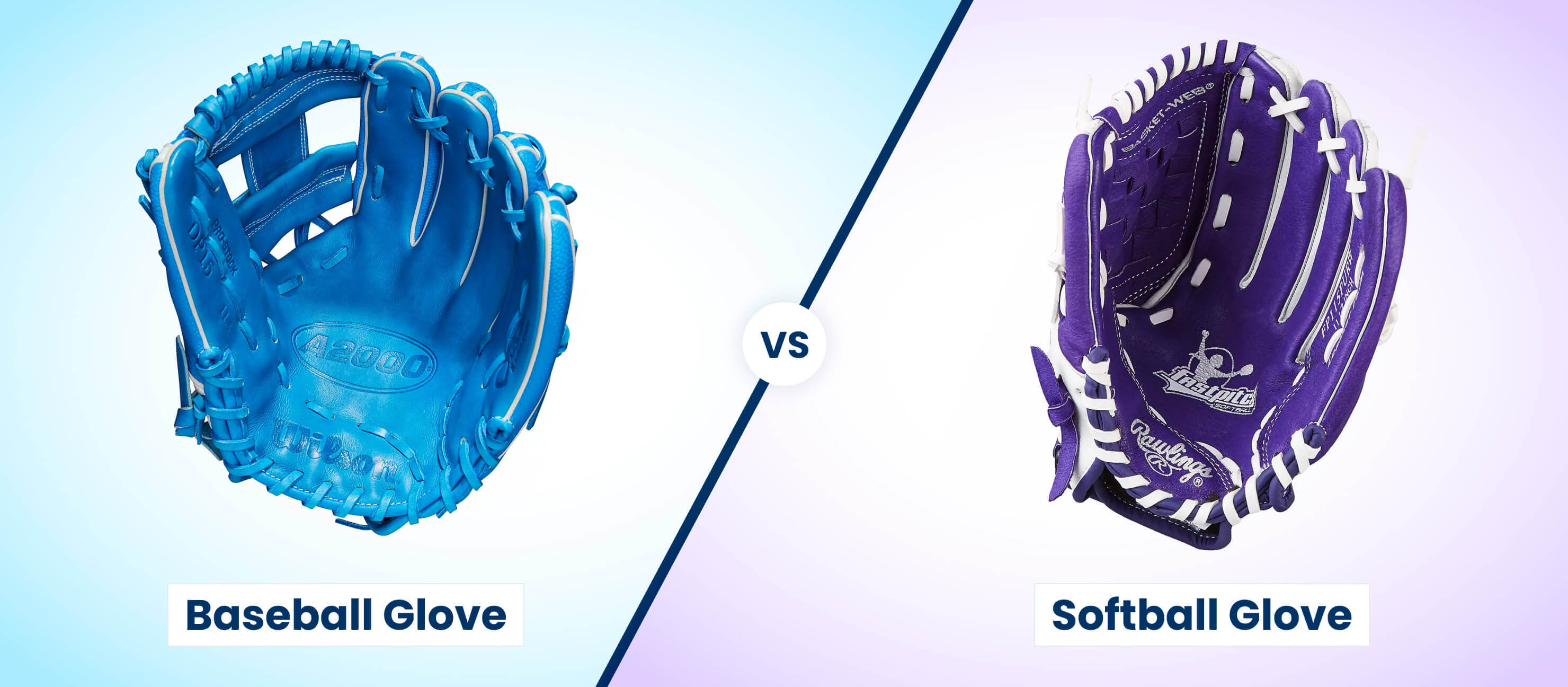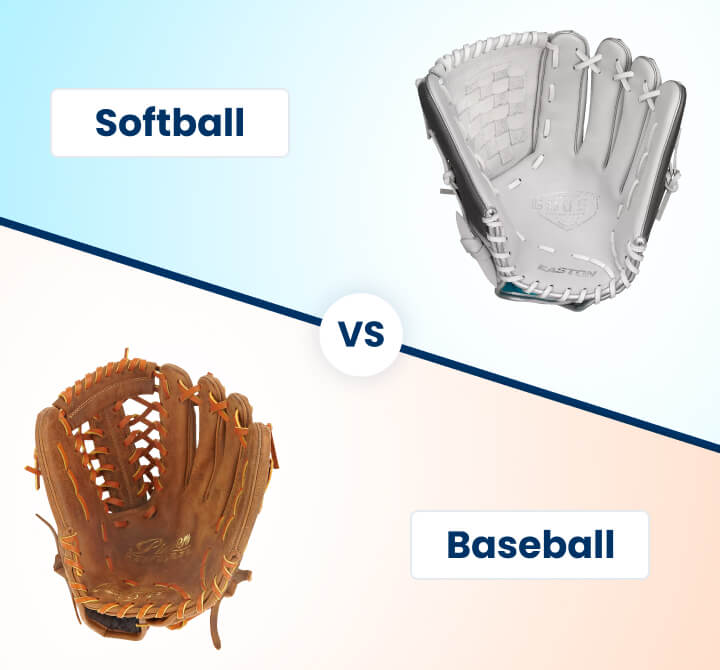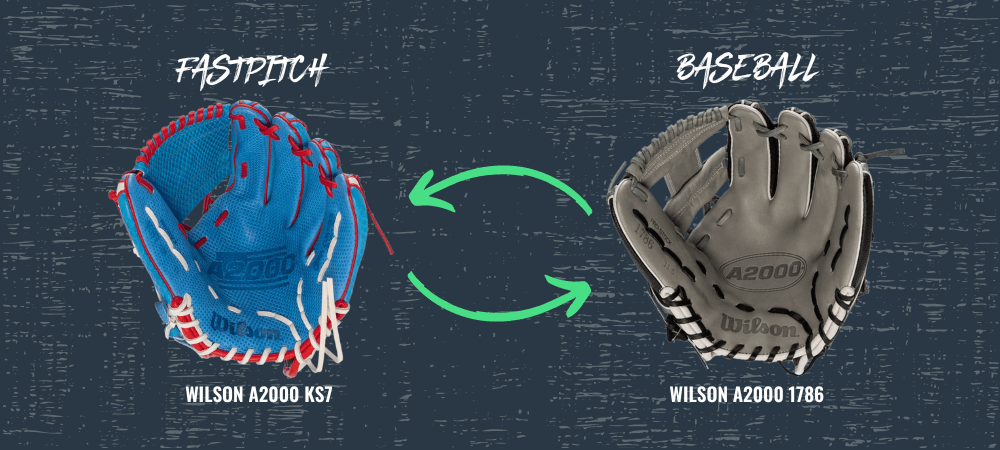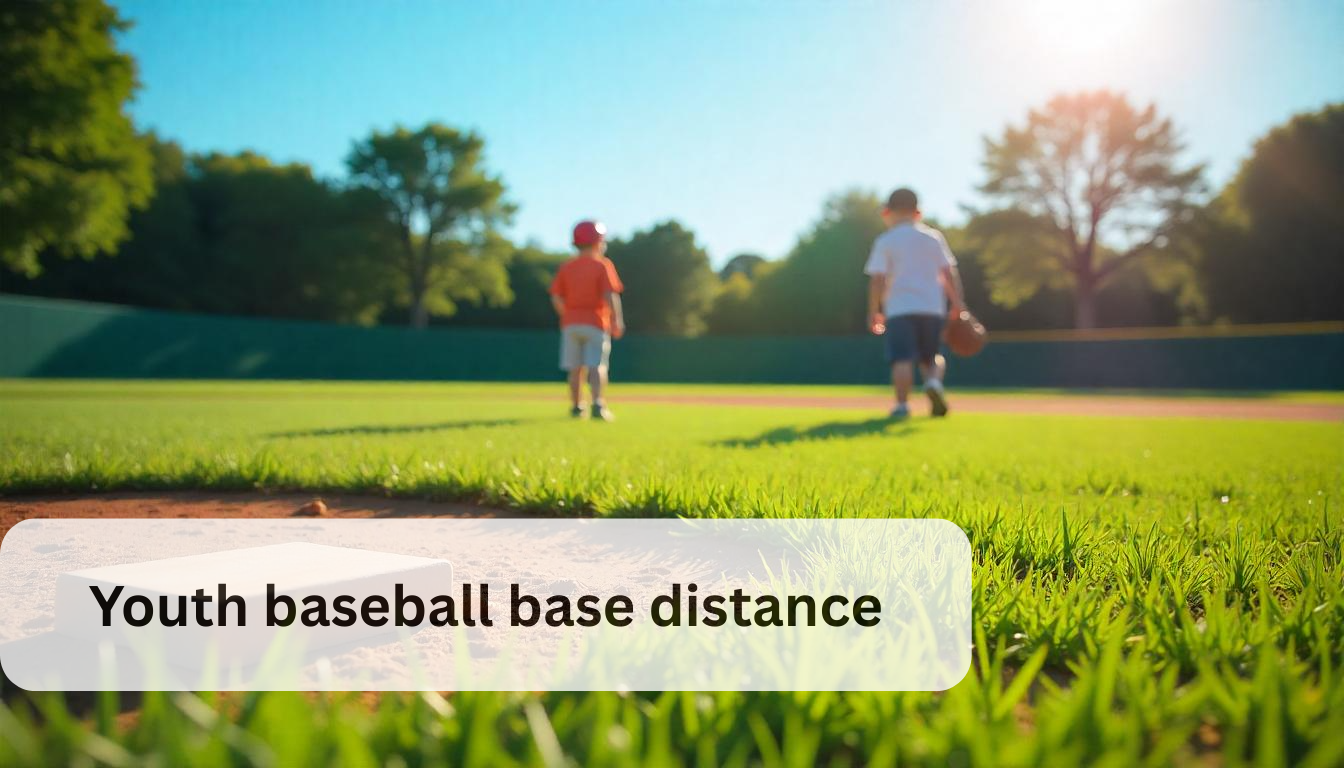Softball and baseball gloves may look similar. But they have distinct differences.
Choosing the right glove depends on the sport you play. Understanding the differences between softball and baseball gloves can improve your game. Both sports require specialized gear, and the glove is a crucial part. The design, size, and flexibility of the gloves vary.
Knowing these differences helps you make an informed choice. Whether you are a beginner or an experienced player, picking the right glove can enhance your performance. This guide will explain the key features of each glove. It will help you find the best fit for your needs. Let’s dive into the world of softball and baseball gloves.

Credit: www.baanthaikansas.com
Glove Size
Understanding the difference in glove size between softball and baseball is essential. Both sports require specific glove sizes to enhance performance. Let’s dive into the details.
Standard Measurements
Softball gloves are generally larger than baseball gloves. Softball gloves range from 11.5 to 13 inches. Baseball gloves typically range from 9 to 12.75 inches. The size differences cater to the unique ball sizes in each sport. Softball uses a larger ball, necessitating a bigger glove pocket.
Impact On Gameplay
The size of the glove significantly impacts gameplay. Larger softball gloves provide a bigger catching area. This helps players catch and secure the larger softball. Smaller baseball gloves offer better control and precision. Players can quickly transfer the ball from glove to hand. This is crucial for fast-paced plays. Using the correct glove size enhances overall performance. It ensures players can handle the ball effectively and comfortably.
Webbing Differences
Understanding the differences in webbing between softball and baseball gloves can help players choose the right equipment for their sport. The webbing in a glove affects how the ball is caught and secured. Let’s explore the various types of webbing and their specific functionalities in each sport.
Types Of Webbing
- Closed Webbing: Great for pitchers, hides the ball from the batter.
- Open Webbing: Preferred by infielders, allows quick ball transfer.
- I-Web: Common in baseball, offers a balance between visibility and security.
- H-Web: Provides flexibility and strength, ideal for outfielders.
- Trapeze Web: Popular among outfielders, offers deep pockets and flexibility.
Functionality In Each Sport
In baseball, infielders prefer open webbing like the I-Web for quick ball transfer. Outfielders often go for H-Web or Trapeze Web for better visibility and catching deep fly balls.
For softball, the larger ball size makes closed webbing more common. This type of webbing helps secure the ball and is especially useful for pitchers. Infielders might still use open webbing to facilitate faster throws.
| Type of Webbing | Baseball | Softball |
|---|---|---|
| Closed Webbing | Pitchers | Pitchers, General Use |
| Open Webbing | Infielders | Infielders |
| I-Web | Infielders | Less Common |
| H-Web | Outfielders | Outfielders |
| Trapeze Web | Outfielders | Outfielders |
Pocket Depth
Understanding the pocket depth of a glove is crucial for players in both softball and baseball. The pocket depth affects how the ball is caught and secured. It varies between the two sports due to differences in ball size and gameplay.
Purpose In Softball
Softball gloves have a deeper pocket. This deep pocket helps in catching and holding the larger softball. The size of a softball is bigger than a baseball, so the glove’s design must accommodate this. Players need to secure the ball quickly and efficiently. A deeper pocket provides better control.
Purpose In Baseball
Baseball gloves have a shallow pocket. This shallow pocket allows for quicker ball transfers. In baseball, speed and precision are vital. The smaller baseball can be easily retrieved from a shallow pocket. This design helps players to make fast throws and precise catches.
| Sport | Pocket Depth | Reason |
|---|---|---|
| Softball | Deep | Accommodate larger ball, ensure control |
| Baseball | Shallow | Enable quick ball transfers |
Material Used
Choosing the right glove is crucial for softball and baseball players. The material used in these gloves greatly impacts their performance and durability. Different materials offer varying benefits and drawbacks.
Common Materials
Softball and baseball gloves commonly use leather and synthetic materials. Leather is the most popular choice for its durability and flexibility. Full-grain leather is the highest quality, offering the best performance. Synthetic gloves are lighter and more affordable. They are ideal for beginners and younger players.
Durability And Performance
Leather gloves last longer than synthetic ones. They break in easily and mold to a player’s hand. This enhances control and comfort during play. Synthetic gloves require less maintenance. They are also resistant to moisture. This makes them suitable for all weather conditions. Yet, they may not provide the same level of control as leather gloves.
Fit And Comfort
The fit and comfort of a glove are crucial for performance in both softball and baseball. A glove that fits well can enhance grip, control, and overall game experience. Below, we explore the key aspects that influence fit and comfort in softball and baseball gloves.
Adjustability Features
Both softball and baseball gloves come with various adjustability features to ensure a snug fit. Common features include:
- Velcro straps
- Adjustable laces
- Wrist straps
Velcro straps are easy to adjust and provide quick tightening. Adjustable laces allow for a more customized fit. Wrist straps add extra support and comfort, preventing the glove from slipping.
Player Preferences
Player preferences vary widely based on individual needs and playing style. Some players prefer a tighter fit for better control, while others opt for a looser fit for comfort.
| Preference | Reason |
|---|---|
| Tighter fit | Enhanced control and grip |
| Looser fit | Increased comfort and flexibility |
Choosing the right fit often involves trying several gloves and adjusting the features to meet personal comfort levels.
Position-specific Designs
Choosing the right glove can change your game performance. Softball and baseball gloves have unique designs for each position. These designs help players excel in their roles. Let’s explore the key differences in gloves for infield and outfield positions.
Infield Gloves
Infield gloves are smaller for quicker ball transfers. They typically measure 11 to 12 inches. This size helps infielders field ground balls and make fast throws. The pockets are shallow, allowing for faster ball retrieval. This design suits positions like shortstop and second base. Softball and baseball infield gloves share these features. Yet, softball gloves have a slightly larger pocket for the bigger ball.
Outfield Gloves
Outfield gloves are larger for better reach and ball control. They range from 12 to 13 inches in length. This size helps outfielders catch fly balls and line drives. The pockets are deep, securing the ball upon catch. Outfield gloves often have longer fingers for extra reach. This design benefits positions like left, center, and right field. Softball outfield gloves are also larger to accommodate the bigger ball. Baseball outfield gloves are designed for precision and speed.
Care And Maintenance
Proper care and maintenance of your softball or baseball glove can extend its life. It also keeps the glove in top condition for optimal performance. Here are some essential tips for cleaning and storing your glove to ensure it stays in great shape.
Cleaning Tips
Regular cleaning of your glove is essential. Dirt and sweat can damage the leather over time. Use a soft cloth to wipe away dirt after each use. A leather cleaner can help remove tougher stains. Avoid soaking the glove in water. Water can weaken the leather.
For deep cleaning, use a brush with soft bristles. Gently scrub the glove to remove embedded dirt. Apply a small amount of leather conditioner after cleaning. This will keep the leather supple and prevent cracking.
Storage Recommendations
Proper storage of your glove is crucial to maintain its shape and quality. Store your glove in a cool, dry place. Avoid leaving it in direct sunlight. Sunlight can cause the leather to dry out and crack.
Place a softball or baseball in the glove when storing it. This helps maintain its shape. Wrap the glove with a band or tie. This ensures it stays closed and retains its form.
Avoid storing the glove in a bag for long periods. Lack of air circulation can lead to mold and mildew. Check the glove regularly for any signs of damage or wear. Early detection can prevent further deterioration.

Credit: www.justballgloves.com
Choosing The Right Glove
Choosing the right glove is crucial for both baseball and softball players. The correct glove can enhance performance and prevent injuries. This section will guide you through essential factors and top brands to help you make an informed decision.
Factors To Consider
When selecting a glove, several factors should be considered:
- Size: Softball gloves are generally larger to accommodate the bigger ball.
- Webbing: Baseball gloves often have tighter webbing, while softball gloves feature wider patterns.
- Material: Leather gloves offer durability and better performance but are pricier. Synthetic gloves are cheaper and require no break-in period.
- Position: Different positions require different types of gloves. For instance, catchers need a mitt, while outfielders need a glove with a deeper pocket.
- Comfort: Ensure the glove fits well and feels comfortable on your hand.
Top Brands And Models
Here are some of the top brands and models for both softball and baseball gloves:
| Brand | Model | Type |
|---|---|---|
| Rawlings | Heart of the Hide | Baseball |
| Wilson | A2000 | Softball |
| Mizuno | Prospect | Baseball |
| Easton | Ghost | Softball |
| Louisville Slugger | Genesis | Baseball |
| Nokona | X2 Elite | Softball |
These brands are renowned for their quality and performance. Each model offers unique features tailored to different needs.
Select a glove that matches your position and playing style. This ensures maximum efficiency and comfort during play.

Credit: www.academy.com
Frequently Asked Questions
What Is The Main Difference Between Softball And Baseball Gloves?
Softball gloves are generally larger than baseball gloves. This is because the softball is larger in size. The pocket in a softball glove is deeper to accommodate the bigger ball.
Can You Use A Baseball Glove For Softball?
Yes, you can use a baseball glove for softball. However, it may not perform as well. A softball glove is designed specifically for the larger softball.
How Do Glove Sizes Differ In Softball And Baseball?
Softball gloves are typically 12 to 14 inches in size. Baseball gloves usually range from 9 to 12. 75 inches. The size difference helps accommodate the larger softball.
Are There Different Glove Materials For Softball And Baseball?
Both softball and baseball gloves can be made from leather or synthetic materials. The choice of material depends on personal preference and budget. Leather gloves are generally more durable.
Conclusion
Choosing between a softball and baseball glove depends on your needs. Softball gloves are larger, accommodating bigger balls. Baseball gloves, smaller, fit snugly for precise catches. Both gloves have unique features. Consider your sport and position. Comfort and performance should guide your decision.
Test different gloves to find the best fit. Remember, the right glove enhances your game. Happy playing!





